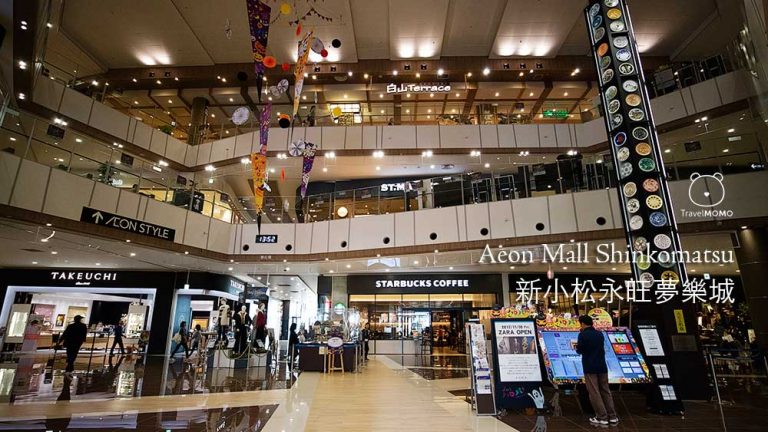Newly opened in March 2017, Aeon Mall Shinkomatsu is the latest and the largest shopping mall in Hokuriku region (northwestern part of the main island of Japan). There are around 160 shops, cafes and restaurants and 3,400 parking space! The shopping mall is only 15 minutes away by car from Komatsu Airport. There are shuttle buses from JR Komatsu Station but it’s only twice every hour at the moment. Taking a taxi from the JR Komatsu station costs about ¥2,100 one way.
Fruit picking has been a popular activities for tourists because many orchards or farmlands offer all-you-can-eat-fruit-picking package that you can pick the seasonal fruits you like in the farm. Depending on the location, the most common and popular fruit is strawberries which are available between December and May every year. In Kaga Fruitland in Ishikawa prefecture, fruit-picking is available year round. Here’s the schedule: Strawberries: Mid December to May Cherries and blue berries: June Grapes: July to October Apples: mid October to early December There are different packages for fruit picking. Advance booking is required. There is a time limit of 30 minutes for strawberry picking and 40 minutes for cherry picking. Please check out the website www.furulan.com.
Established in 717 AD and as the head temple of the Shingon Sector of Buddhism, the Natadera Temple is an expansive temple with hundreds of years old trees, historic buildings designated as Important Cultural Property of Ishikawa Prefecture, and magnificent scenery. Mountains, rivers, waterfall, and other nature were considered indispensable in the lives of ancient people, and were respected and worshipped — nature itself was considered a god. For over a thousand years, the ancient cedar trees, plants, and the rock formation at Natadera Temple has made it a sacred place to pray to deities. In the old days, people also believed in reincarnation. The caves at Natadera Temple were considered wombs of mothers and places of Umarekiyomaru, the cycle of death, purification, and rebirth. That is also part of the experience when you visit the temple. Natadera Temple was also destroyed after experiencing 3 wars. In 1640, the third lord of the Kaga Domain rebuilt the temple. Seven of its buildings have been designated as important cultural properties, and two locations as places of scenic beauty. The temple has…
The name Kanazawa, which literally means marsh of gold, is said to be originated from a legend that the peasant Imohori Togoro who washed gold dust in a local marsh. The history of gold leaf production dates back to the end of 16th century but it was restricted to be produced in Edo (Tokyo today) and Kyoto at the time. Kanazawa, with the suitable climate, temperature, humidity, water, and highly skilled craftsmen was only revived publicly in the second half of the 19th century. Today, over 98% of the gold leaf was produced in Kanazawa, Ishikawa Japan. When you visit Kanazawa, you will see a lot of gold leaf products and you may experience making a lacquer ware with gold leaf yourself. It’s fun!




